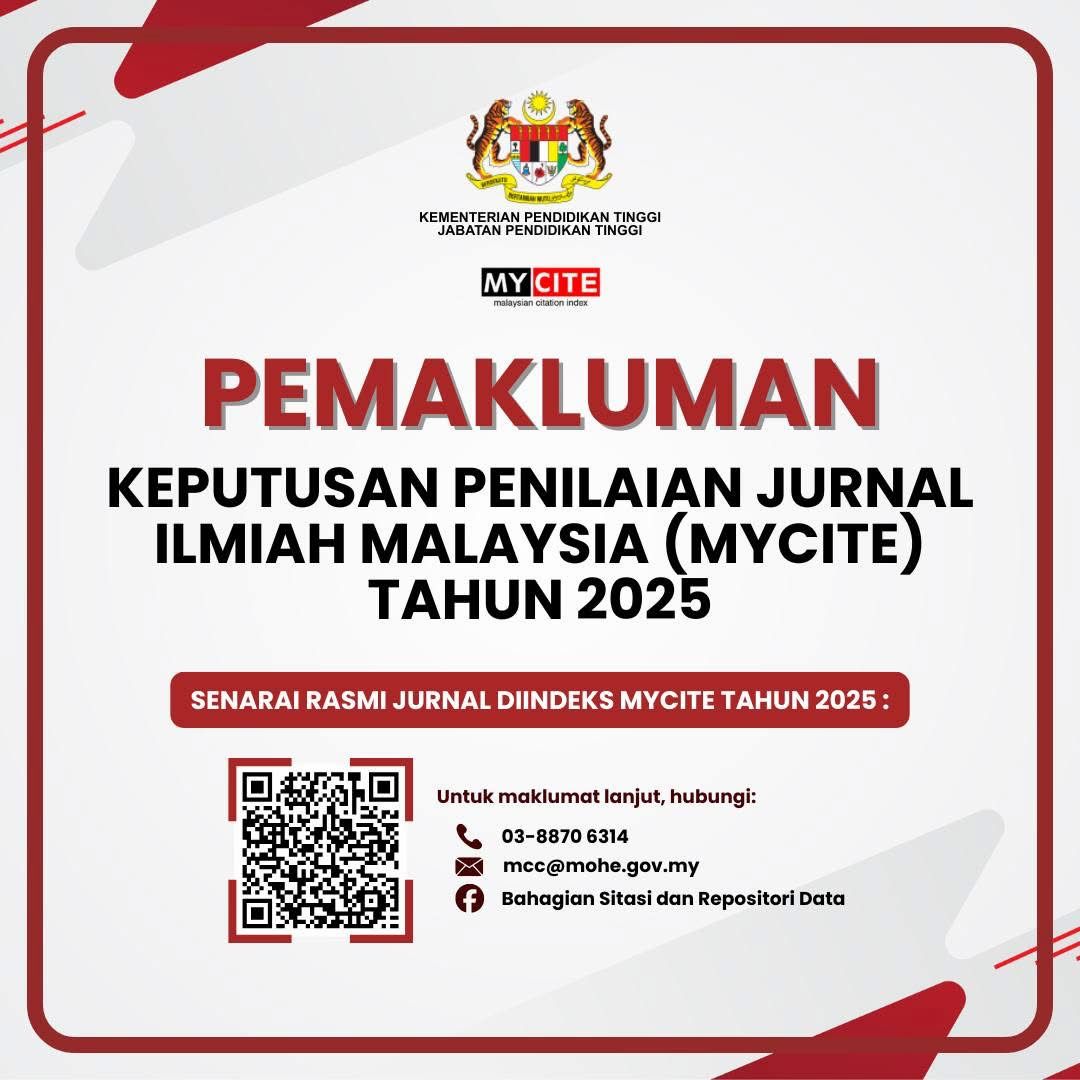Sustainable Housing Landscape Concept as a Source of Wrapping Materials for Preserving Culture Activities in Malay Traditional Food
DOI:
https://doi.org/10.24191/idealogy.v3i2.84Keywords:
Traditional food wrapping, natural ingredients, uniqueness, cultural identity, environmental sustainabilityAbstract
In the Malay community, traditional food packaging is made from a variety of natural ingredients / leaves. The interesting aspect of Malay cakes in the Malay Archipelago is the type of leaves used to wrap food. Examples of leaves used are: banana leaf, upih pinang, baharu leaves, ketapang leaves, yam leaves, pandanus leaves, coconut leaves and rubber tree leaves. However, among these ingredients, banana leaves are very popular and most widely used as wrappers for some Malay food and cakes as wrappers. Uniquely, each type of cake has its own packaging and technique methods, even using the same material from the wrapping material. More unique are some traditional kueh that use coconut leaf and have to go through the woven process to make cone or casing. This privilege requires a skill not everyone, especially this generation. He should be taught this knowledge of woven art / wrapping and the cultural elements behind him will be transferred to a new generation. If not preserved, the country will lose its cultural identity. Modern packaging are using plastic and PVC materials threatens our culture and yet this material will worsen the quality of environmental pollution if the disposal of this waste is not properly managed. In order to pursue this traditional culture, the community is encouraged to plant trees that can be used as packaging of this tradition, around the house and yet contributed for environmental sustainability.
Keywords: Traditional food wrapping, natural ingredients, uniqueness, cultural identity,
environmental sustainability.
References
Tourism Development. Paper Presented at Seminar Budaya, Pemuliharaan dan Warisan di Malaysia.
Fakulti Ecologi Malaysia, Universiti Putra Malaysia, 30 September 2004.
Abdullah A Badawi (2007), Pertahan budaya, kesenian bangsa, Berita Harian, Malaysia, 10 April
2007, pg. 2].
Akta Warisan Kebangsaan (2005) (Akta 645), Jabatan Warisan Negara, Kementerian Kebudayaan,
Kesenian, dan Warisan (KeKKWA). Kuala Lumpur.
Bill, S. (2007), Packaging Design, Laurence King Publishing, UK
Casey Ng (2015), Plant Leaves in Food Preparation and Packaging, UTAR Agriculture Science
Journal, Oct., 2015.
Gordon, L. R. (2005), Food Packaging: Principles and Practice, Marcel Dekker Inc, New York, USA.
Groth, C. (2006), Exploring Package Design - The Art and Techniques of Designing Exceptional
Packaging, Thomson Delmar Learning, Canada
Hasanah (Dr.) (2008), Anyam Ketupat: Seni Kraftangan yang dilupakan, www.Dr Hasanah .com
Hashim Hj. Musa (2005), Pemerkasaan Tamadun Melayu Malaysia Menghadapi Globalisasi Barat,
Penerbit Universiti Malaya, Kuala Kumpur.
Hideyuki Oka (2008), How to Wrap Five Eggs: Traditional Japanese Packaging, Weatherhill, Boston.
https://dengarden.com., Susette Horspool (2018). How to Plant Tree in Your Landscape.
Marzita Puteh, Sadiah Baharom, Jamilah Omar (2007), Pemikiran Saintifik dan Matematik dalam Kraf
Anyaman Buluh Melayu Tradisional: Satu Kajian Kes, Jurnal Peradaban Melayu, Jilid 5, Tahun
2007, Universiti Pendidikan Sultan Idris, Tg. Malam.
Nik Hassan Suhaimi Nik Abd Rahman (2005), Aspek-aspek Tamadun Melayu: Perkembangan dan
Perubahan, (Seminar Warisan Seni Bangsa: Bicara Warisan Khazanah Jiwa), Upena, UiTM Shah
Alam.
Noor Nikman Salleh (2009). Bab 2: Impak Globalisasi, Seni dan Kebudayaan, Universiti Teknologi
Malaysia.
Rahmat Awang (Prof. Madya) (2006), Bahaya Bahan Kimia Dalam Pembungkusan Plastik, Pusat
Racun Negara, USM.
S. M. Mohamed Idris (2006), Ketupat Segera Dalam Plastik boleh Akibat Kanser, Utusan Malaysia, 2
November 2007, pg. 9].
Siti Zainon Ismail (1986), Rekabentuk Kraftangan Melayu Tradisi, Dewan Bahasa dan Pustaka, Kuala
Lumpur.
Wan Hashim Wan Teh (1998), Nilai Budaya Masyarakat Desa, Kajian Etnografi di Wang Kelian,
Perlis, DBP.
Yuriko Saito (2007), Everyday Aesthetics, Oxford University, NY
http//:www.AbsoluteAstronomy.com (2009).
Downloads
Published
Issue
Section
License
UiTM Press (the Publisher) has agreed to publish the undersigned author’s paper in Idealogy Journal. The agreement is contingent upon the fulfilment of a number of requirements listed below.
1. The undersigned author warrants that the paper entitled below is original, that it is not in any way libellous or unlawful in Malaysia, that it does not infringe any copyright or other proprietary right. The undersigned hereby represents and warrants that he/she is the author of the paper, except for material that is clearly identified as to its original source, with permission notices from the copyright owners where required. The undersigned represents that he/she has the power and authority to sign and execute this agreement.
2. The undersigned author warrants that the paper entitled below has not been published elsewhere, and also it will not be submitted anywhere else for publication prior to acceptance/rejection by this Journal.
3. By submitting the paper entitled below, the undersigned author agrees to transfer the rights to publish and distribute the paper in an international e-journal (entitled above) to Publisher.
4. The undersigned author agrees to make a reasonable effort to conform to Publisher's submission guidelines and to liaise with the editor to ensure that the requirements of these guidelines are met to a reasonable degree.
5. The corresponding author signs for and accepts responsibility for releasing this material on behalf of any and all coauthors. This agreement is to be signed by at least one of the authors who has obtained the assent of the co-author(s) where applicable. After submission of this agreement signed by the corresponding author, changes of authorship or in the order of the authors listed will not be accepted.



